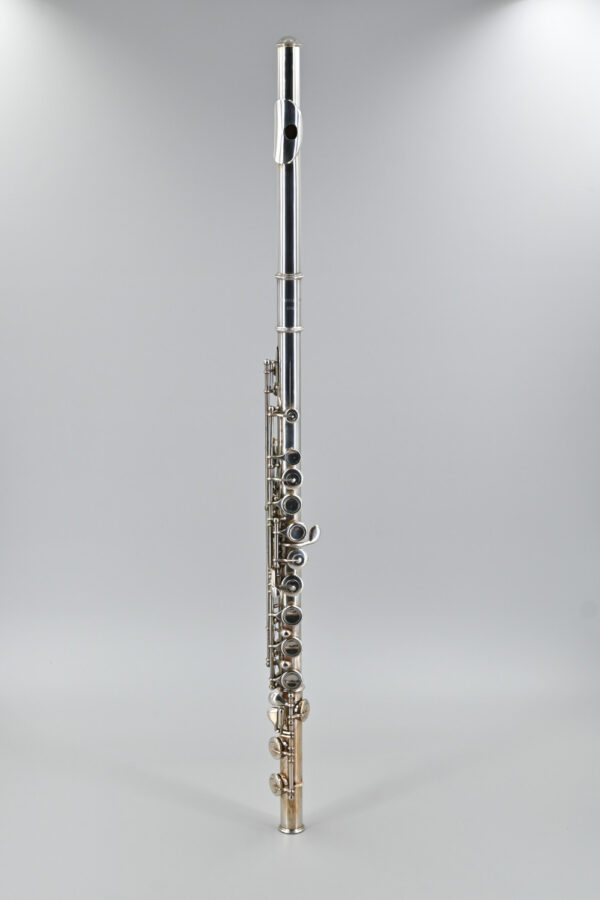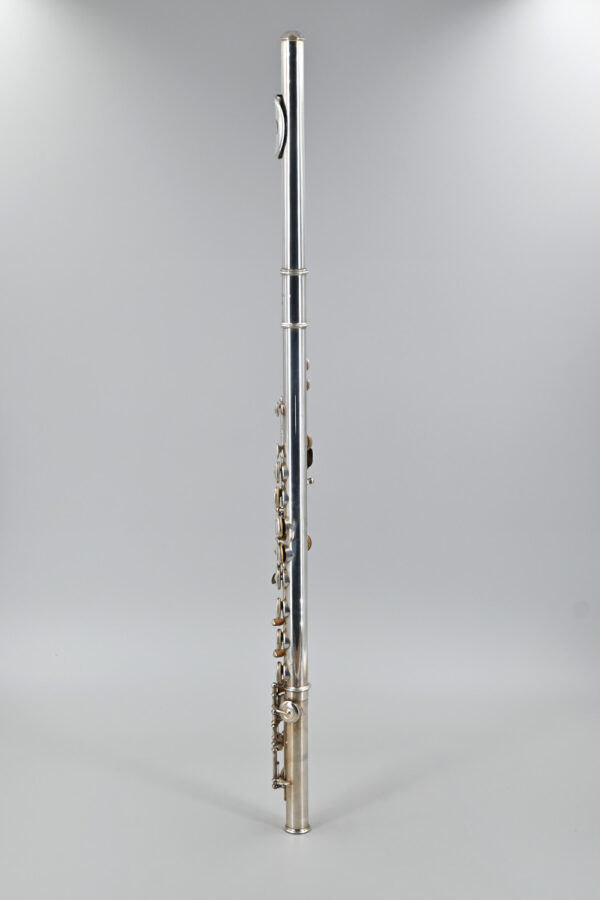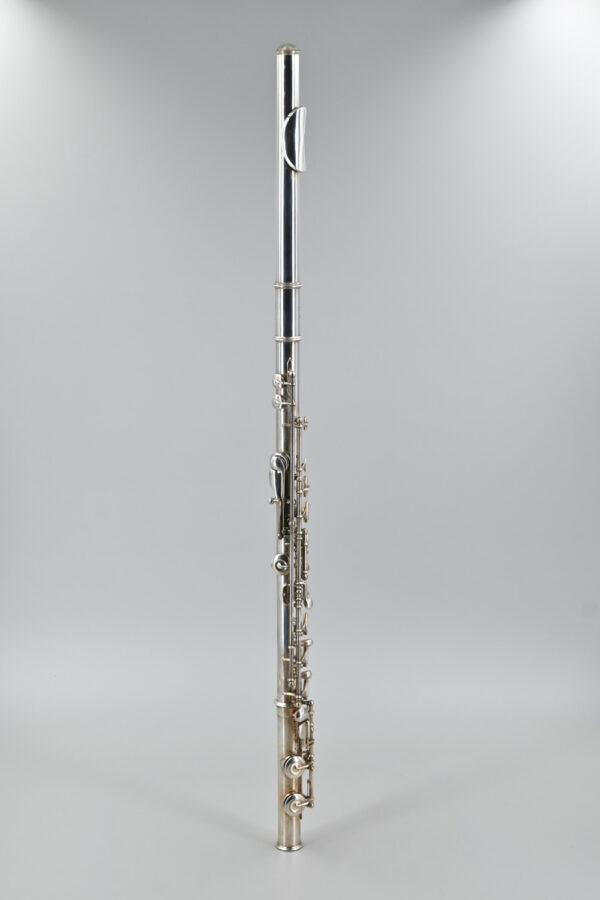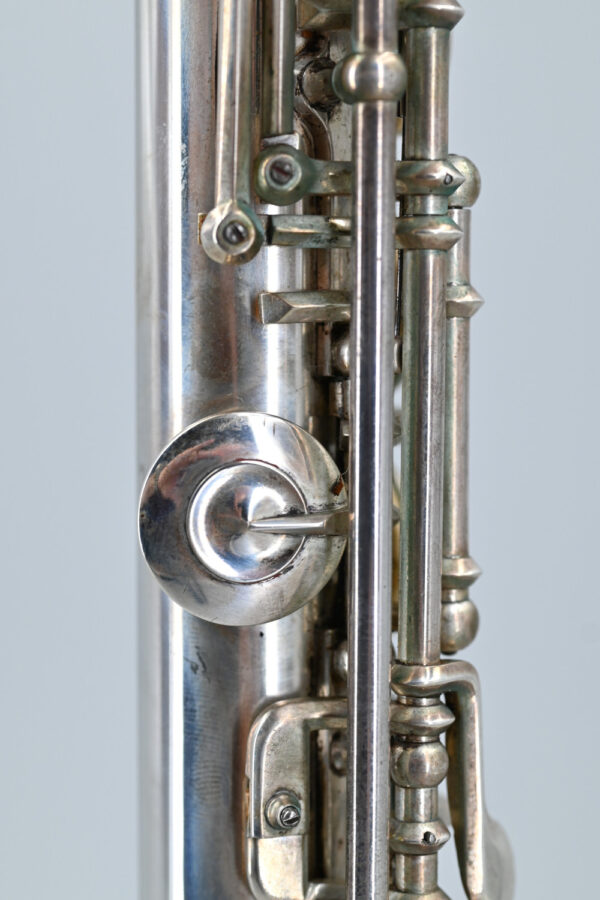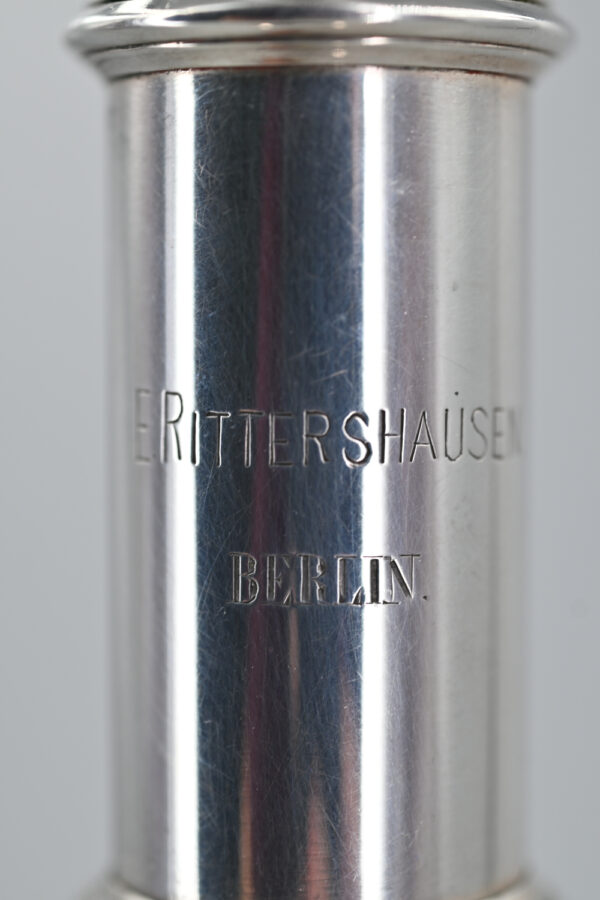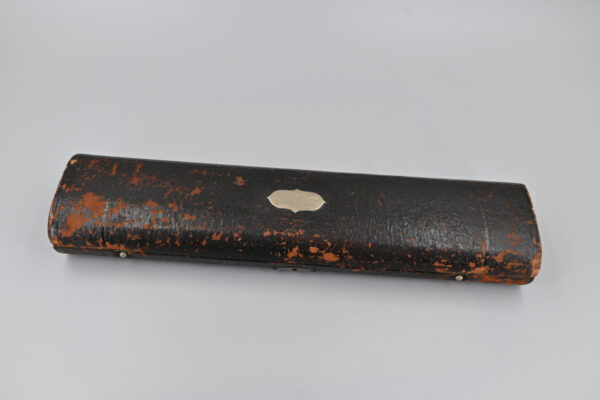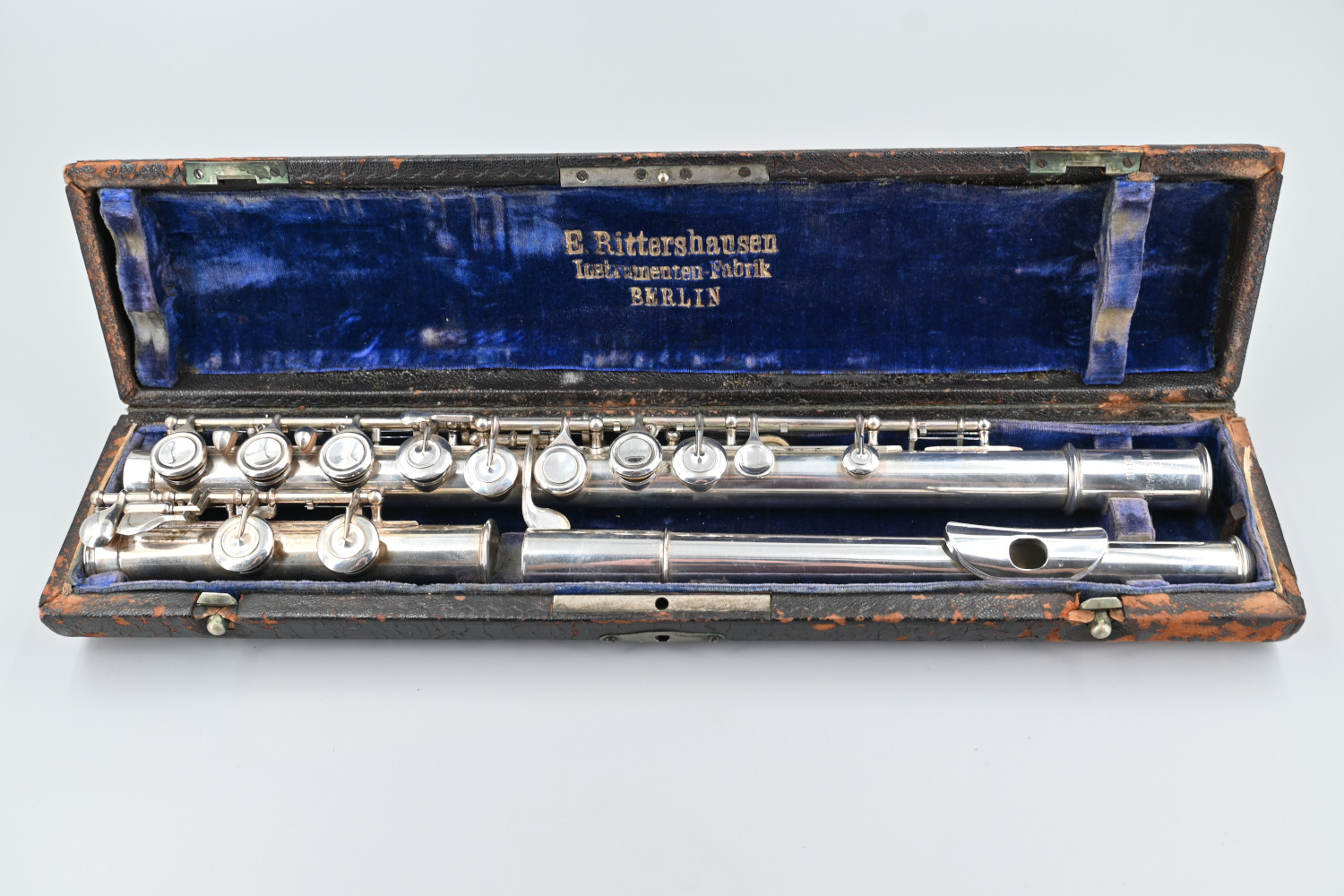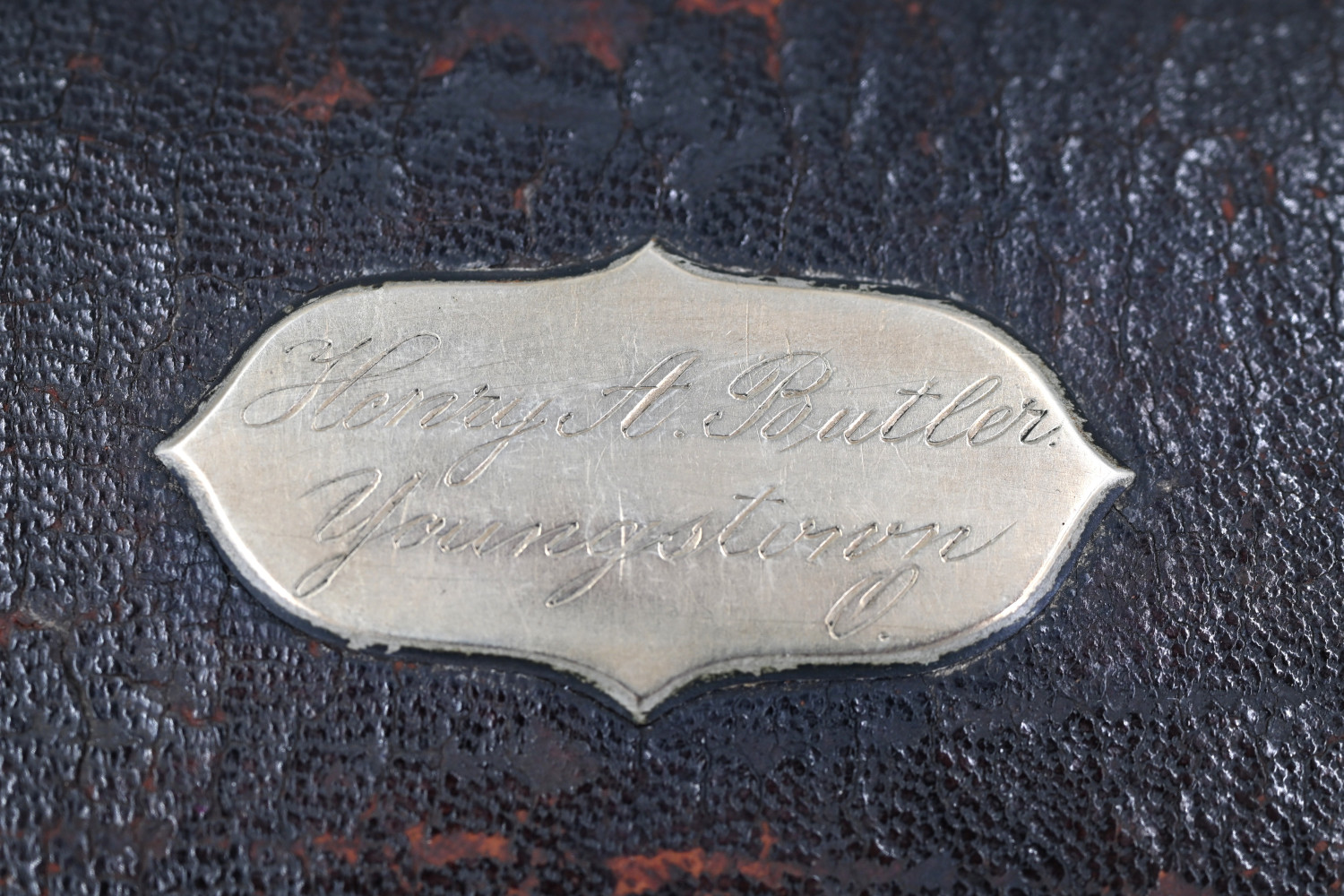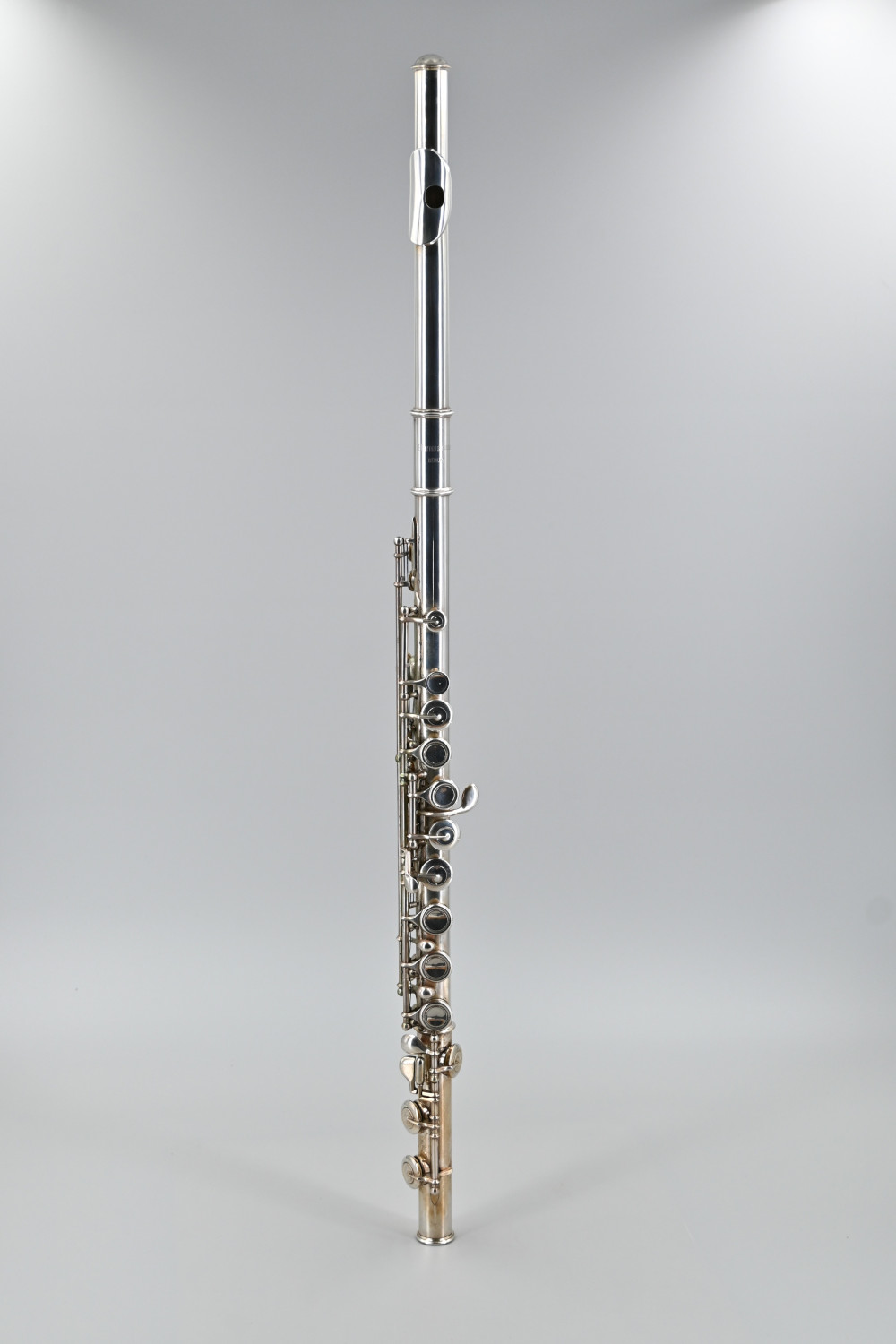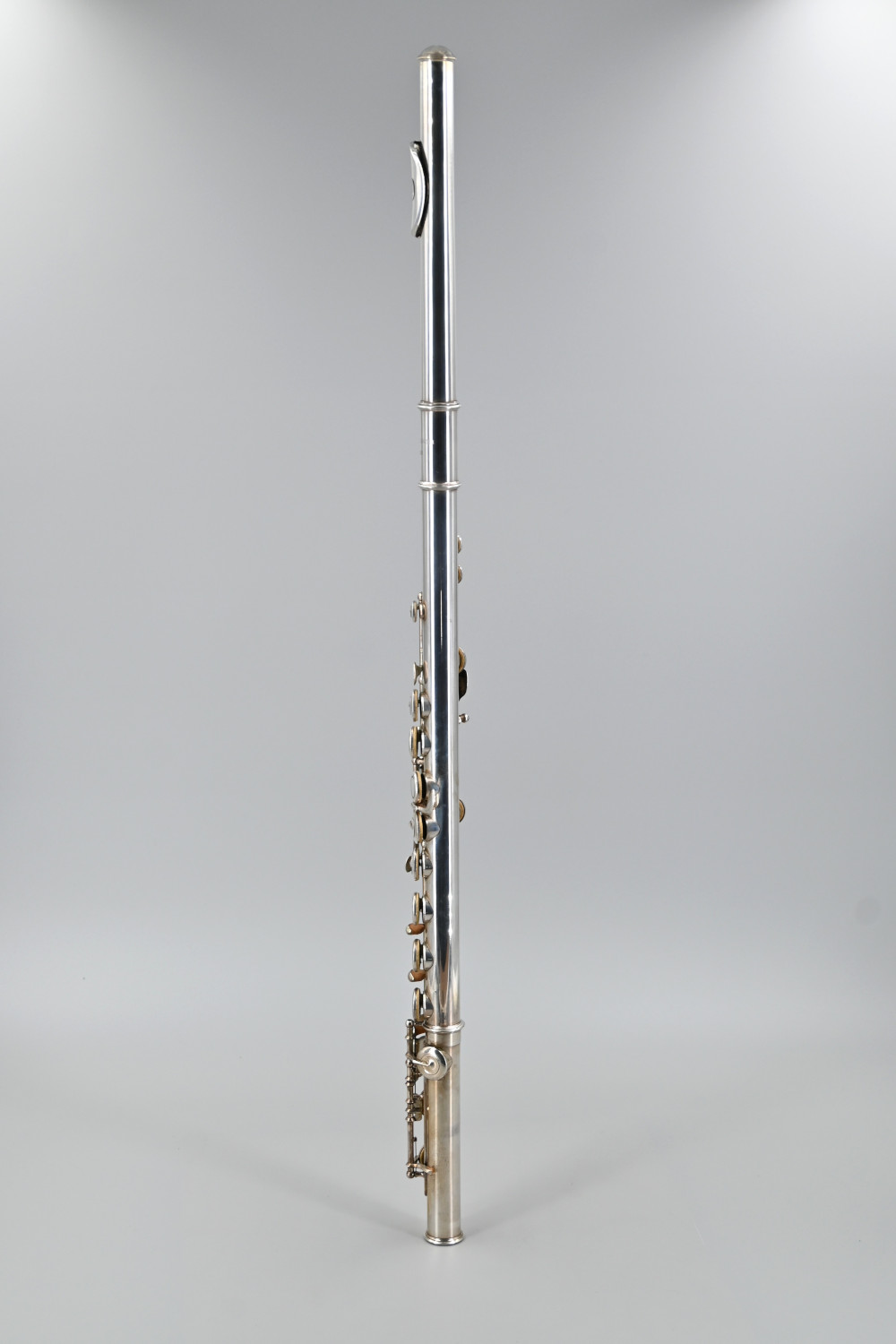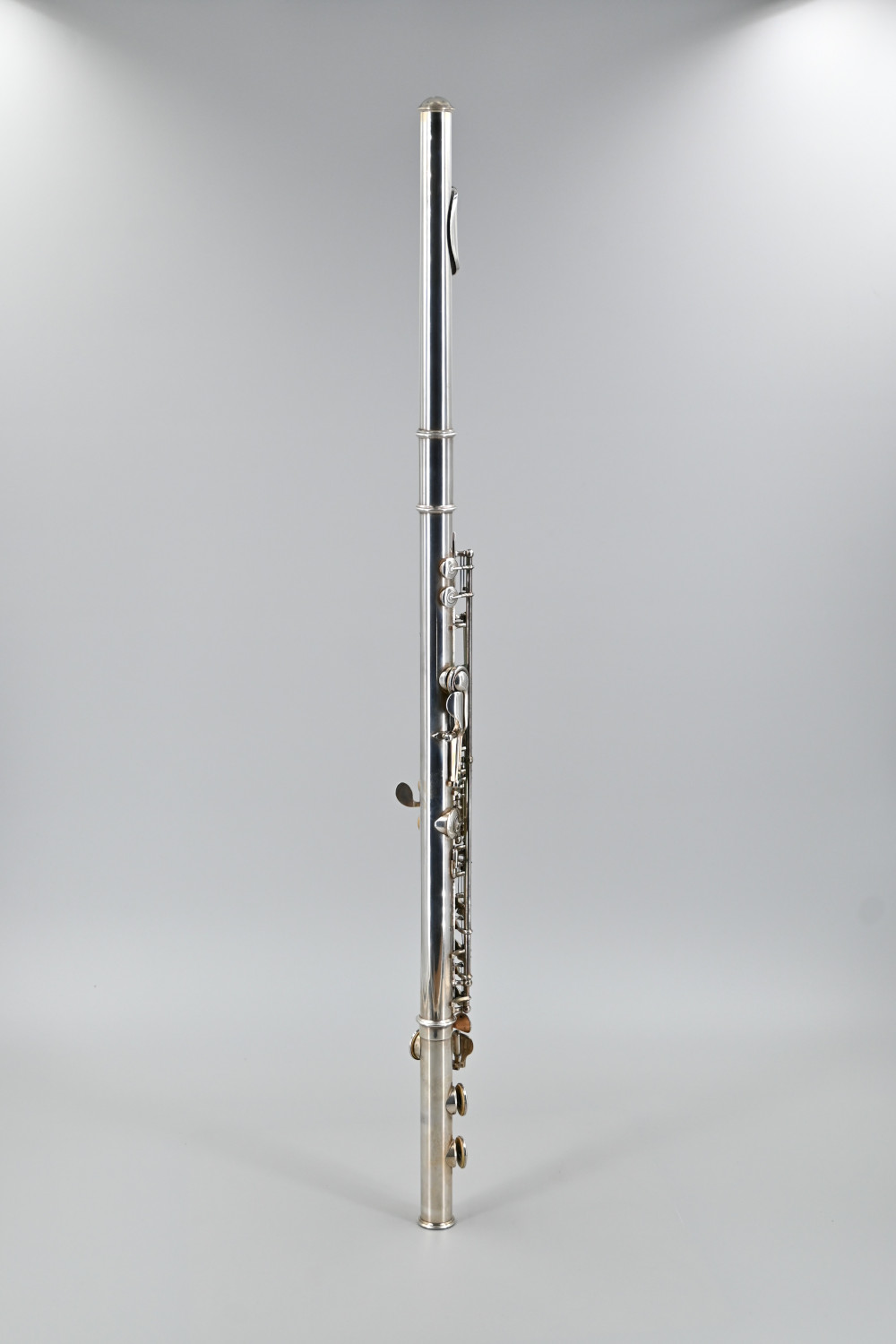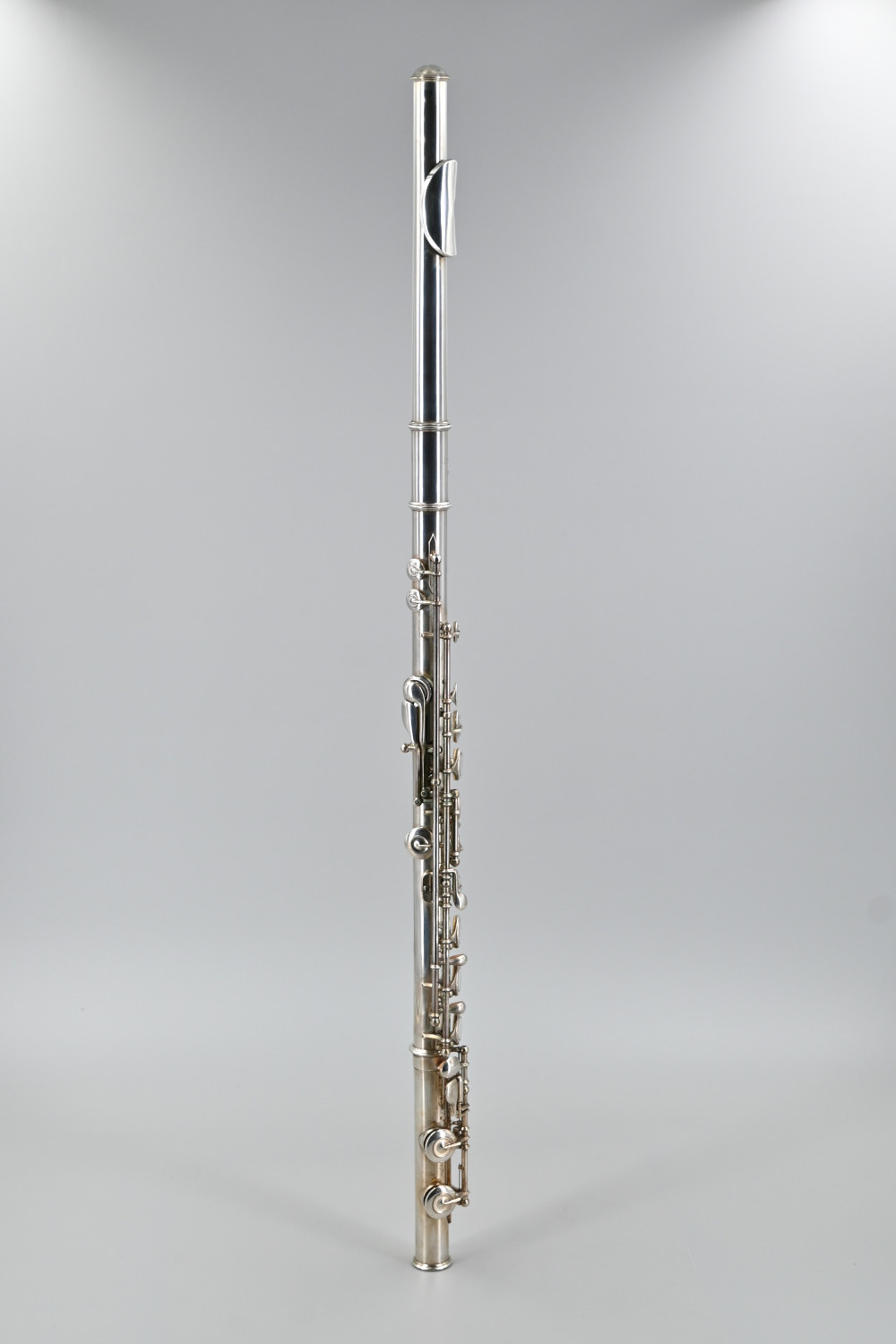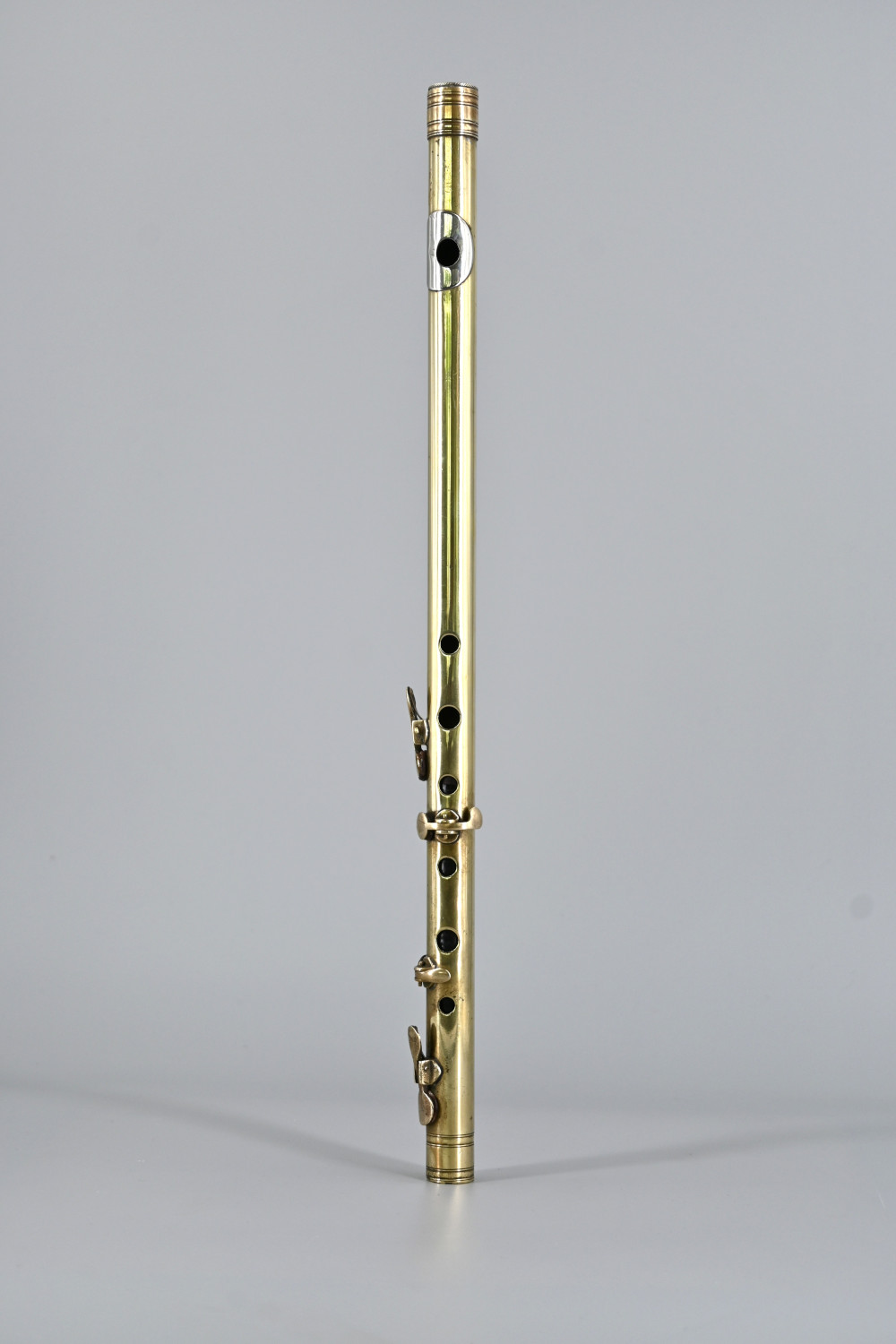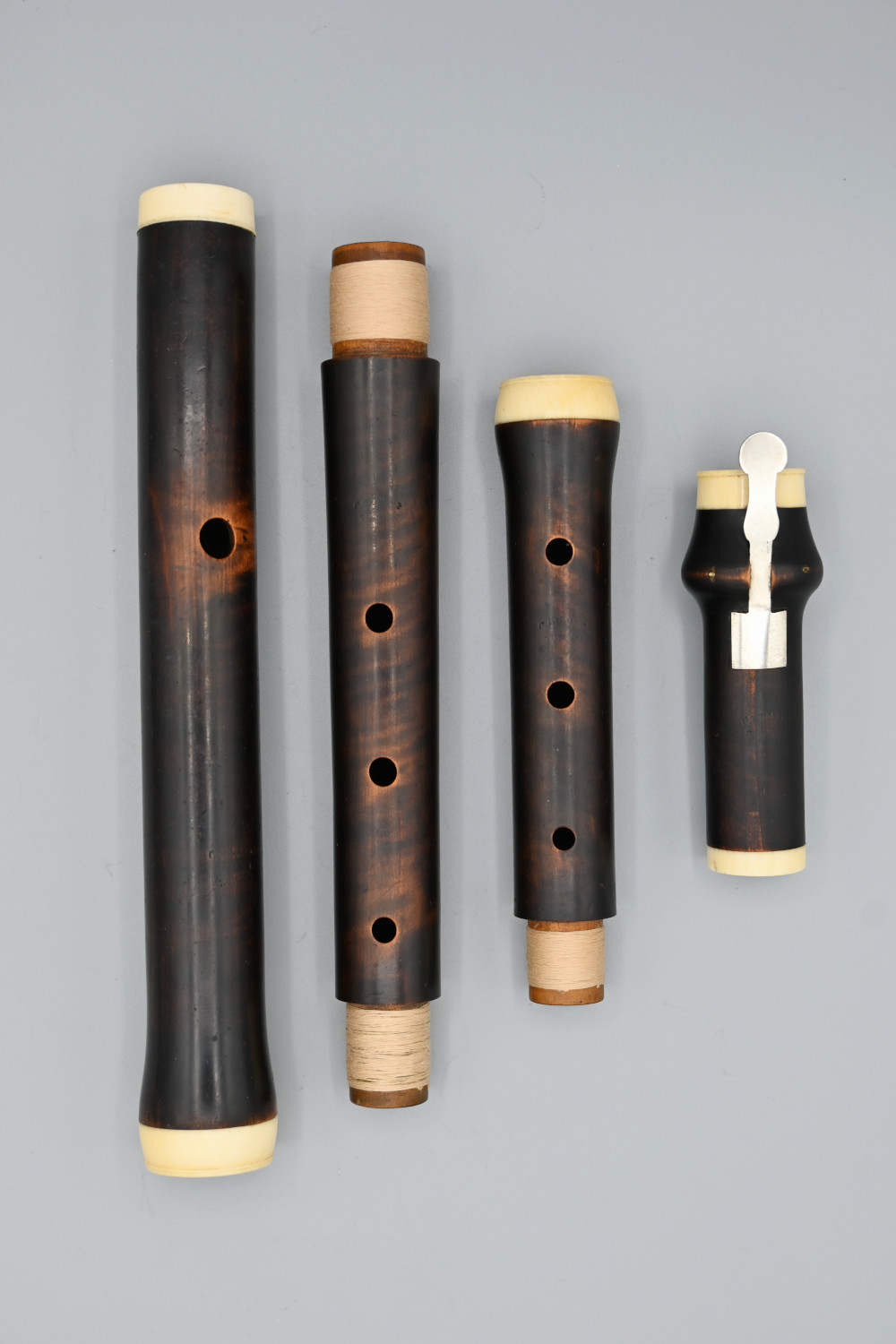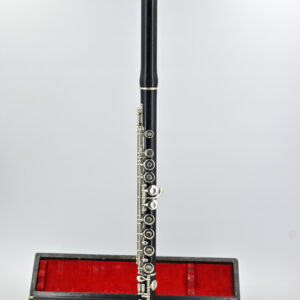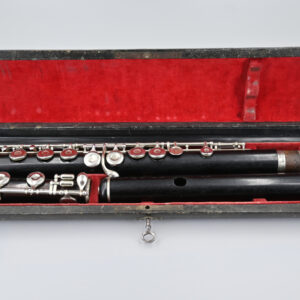Silver flute – RITTERSHAUSEN, Emil
4.900,00 €
| Category | Flutes |
| Maker | RITTERSHAUSEN, Emil |
| Marks and inscriptions | Middle joint: E. RITTERSHAUSEN / BERLIN Case: Henry A. Butler / Youngstown |
| Period | 1830-1900 |
| Place of origin | Berlin, Germany |
| Description | Silver Boehm flute by Emil Rittershausen in original case |
| Materials | Solid silver |
| Dimensions | Total length 668 mm Sounding length 596 mm Weight 425 g Weight with case 802 g |
| Condition | Working condition |
| Special features | Soldered tone holes |
| Accessories | Original case, silver tenon protectors |
| Price (€) | €4,900.00 |
| Ref | 1259 |
- Description
- Enquiry
Description
Silver flute – RITTERSHAUSEN, Emil
This solid silver flute was made by the renowned Berlin-based maker Emil RITTERSHAUSEN. Carl Emil Cäsar RITTERSHAUSEN (1852-1927) worked for Boehm & Mendler before setting up his own workshop in his native Berlin. His Boehm flutes and piccolos were much in demand by professional flutists worldwide. His partnership with the musician and entrepreneur Carl Fischer to supply his flutes to the USA and Canada paved the way to his global success.
show more This is clearly an early example of a Rittershausen flute with the typical features of this great flute maker. It has a seamed tube and soldered tone holes with little balls to hold the adjusting screws. The cups are very thin and elegant. The pointed-arm keys are wonderfully crafted. It has a typical G-sharp touchpiece that is slightly lowered and looks really great. The lip-plate is concave in shape. The embouchure itself is small at just 9.9 mm x 11.7 mm – this lends the flute a very colourful, bright and open sound through all the ranges of notes. It has a warm and rich bottom register. This flute can still be played, although the pads are very old. It needs repadding and an overhaul. With the head joint full inserted, it plays are a=443 Hz. Therefore, it can easily be played from a=440 Hz to a=442 Hz. We think this flute dates to the 1890s, before Rittershausen started to use serial numbers and before his partnership deal with Carl Fischer. The case is also original with its blue velvet lining and inscription rather than the later burgundy colour. It was made for Henry A. Butler of Youngstown. Henry Audubon Butler (1872-1934) was the son of the American industrialist, philanthropist and popular historian Joseph G. Butler, who founded the Butler Institute of American Art. show less




